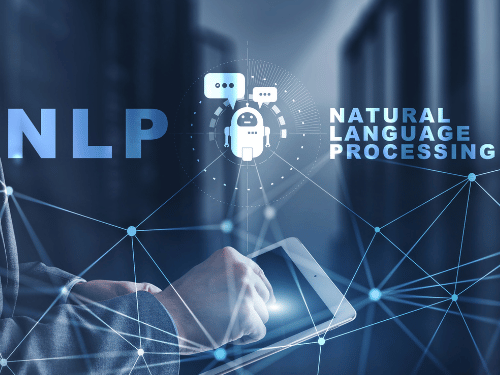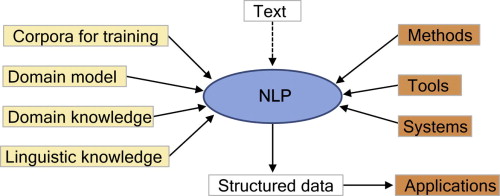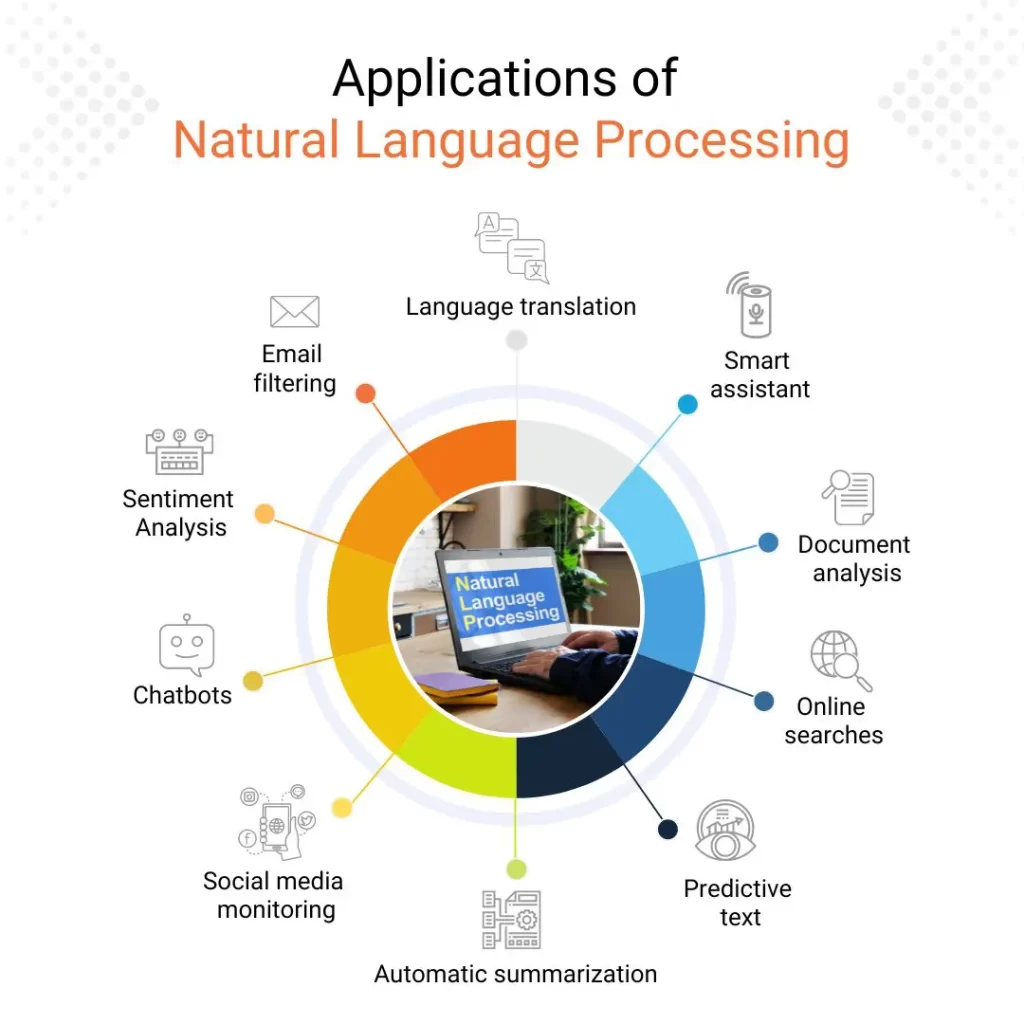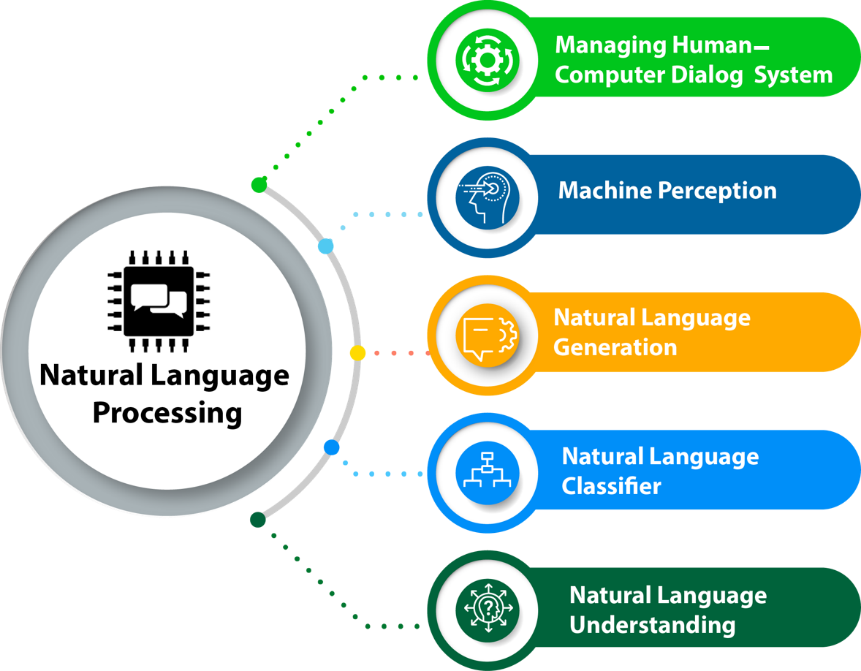
Introduction
Welcome to this comprehensive tutorial on Natural Language Processing (NLP). In this guide, we’ll delve into the intriguing domain of NLP, a branch of artificial intelligence that empowers machines to comprehend, interpret, and generate human language. Throughout this tutorial, we will unravel the fundamental principles, methodologies, and real-world applications of NLP, shedding light on its transformative impact on human-machine communication.
Table of Contents
- Understanding NLP
- Definition and Scope of NLP
- Significance in AI Advancements
- Essential NLP Concepts
- Tokenization and Text Preprocessing
- Part-of-Speech Tagging
- Named Entity Recognition
- Language Comprehension
- Syntax Analysis and Parsing
- Semantic Understanding
- Language Generation
- Techniques for Text Generation
- Machine Translation and Summarization
- NLP Techniques and Algorithms
- Unpacking Word Embeddings (Word2Vec, GloVe)
- Unveiling Recurrent Neural Networks (RNNs)
- Spotlight on Transformer Models (BERT, GPT)
- Applications of NLP
- Decoding Sentiment Analysis
- Navigating the Realm of Chatbots and Virtual Assistants
- Harnessing NLP for Information Retrieval
- Ethics and NLP
- Addressing Bias and Fairness
- Ethical Considerations in Privacy
- Tools and Libraries for NLP
- Exploring NLTK (Natural Language Toolkit)
- Discovering spaCy
- Unlocking the Power of Hugging Face Transformers
Step-by-Step Guide

- What is natural language processing?
Natural language processing (NLP) refers to the capability of a computer program to comprehend human language in its spoken and written forms, commonly known as natural language. It is a crucial facet of artificial intelligence (AI).
NLP has a history spanning over five decades and is deeply rooted in the field of linguistics. Its practical implications are far-reaching, finding application across diverse sectors such as medical research, search engines, and business intelligence.
2. How does natural language processing work?
NLP empowers computers to comprehend natural language akin to human understanding. Whether in spoken or written form, natural language processing employs artificial intelligence to receive real-world input, process it, and interpret it in a manner comprehensible to computers. Just as humans possess sensory organs like ears and eyes, computers are equipped with programs for reading and microphones for audio capture. Analogous to the human brain processing input, computers possess programs for handling their respective inputs. During the processing journey, the input eventually gets translated into computer-understandable code.
Natural language processing encompasses two key phases: data preprocessing and algorithm development.
Data preprocessing entails the preparation and refining of text data to enable machines to analyze it effectively. This step readies the data for manipulation and accentuates text features that algorithms can effectively utilize.
3. Understanding NLP
Commence by grasping the essence of NLP and its pivotal role in bridging the gap between machines and human language. Illustrate the diverse domains where NLP has made significant contributions.
4. Essential NLP Concepts
Unveil the intricacies of tokenization – the process of segmenting text into meaningful units. Elaborate on the importance of text preprocessing techniques such as lowercasing and stemming. Introduce the significance of part-of-speech tagging and named entity recognition in extracting valuable insights from text.
5. Language Comprehension

Delve into the realm of syntax analysis and parsing to decipher the structure of sentences. Shed light on semantic understanding, where machines glean contextual meaning from language.
6. Language Generation
Navigate through the techniques of text generation, from foundational rule-based approaches to cutting-edge neural language models. Examine the landscape of machine translation and the role of sequence-to-sequence models. Spotlight text summarization as a key application of language generation.
7. NLP Techniques and Algorithms
Demystify word embeddings, elucidating how they encode semantic meaning. Unpack the significance of recurrent neural networks (RNNs) for handling sequential data. Dwell on transformer models like BERT and GPT that have revolutionized NLP tasks.
8. Applications of NLP
Examine the fascinating realm of sentiment analysis, where machines discern emotional tones in text. Traverse the landscape of chatbots and virtual assistants, uncovering how NLP underpins natural conversations. Dive into the realm of information retrieval, showcasing NLP’s role in shaping efficient search engines.
9. Ethics and NLP
Navigate the critical terrain of ethics in NLP, tackling potential biases and fairness issues. Delve into the ethical considerations surrounding user privacy in the context of NLP.
10. Tools and Libraries for NLP
Introduce prominent NLP tools and libraries such as NLTK, highlighting their role in simplifying complex NLP tasks. Spotlight spaCy, a versatile NLP library. Uncover the power of Hugging Face Transformers library, renowned for its pre-trained transformer models.
11. What is natural language processing used for?

Natural Language Processing (NLP) finds its applications across a diverse spectrum of domains due to its remarkable ability to facilitate computers in comprehending, interpreting, and generating human language. The versatility of NLP translates into a multitude of practical uses, some of which include:
- Sentiment Analysis: NLP is adept at discerning the sentiment behind text, be it positive, negative, or neutral. This skill finds extensive use in monitoring social media, analyzing customer feedback, and managing brand perception.
- Language Translation: NLP fuels the realm of machine translation, enabling the seamless conversion of text from one language to another. This is indispensable for global communication, content adaptation, and fostering cross-border collaboration.
- Chatbots and Virtual Assistants: NLP serves as the bedrock for creating intelligent chatbots and virtual assistants that engage in human-like conversations. These entities cater to users by providing information, accomplishing tasks, and facilitating interactions in sectors ranging from customer support to healthcare.
- Speech Recognition: Leveraging NLP, machines adeptly transmute spoken language into written text. This technology powers voice assistants like Siri and Google Assistant, and it’s a cornerstone of transcription services for conferences, interviews, and lectures.
- Information Retrieval: Search engines tap into NLP methodologies to fathom user queries and retrieve pertinent information from vast databases and the internet. This amplifies the precision and relevance of search results.
- Text Summarization: NLP algorithms excel at crafting succinct summaries of extensive textual content, enabling the distillation of key insights without delving into the entirety of the material. This proves invaluable when dealing with copious amounts of information.
- Named Entity Recognition: NLP efficiently detects and categorizes entities such as names of individuals, organizations, geographical locations, dates, and more within a text. This feature facilitates the extraction of structured information from unstructured textual data.
- Text Classification: NLP proficiently categorizes text into predefined classes or categories, underpinning tasks such as spam detection, topic classification, and sentiment analysis.
- Language Generation: NLP’s prowess extends to the creation of human-like text, encompassing domains like creative writing, content generation, and, in certain cases, even code generation.
- Medical and Healthcare Applications: NLP is a driving force in the medical domain, employed for tasks such as medical record analysis, prognosis prediction, drug exploration, and enhancing clinical documentation.
- Financial Analysis: The financial realm harnesses NLP for sentiment analysis of financial news, reports, and social media content, culminating in the prediction of market trends and the formulation of informed investment strategies.
- Legal and Compliance: NLP proves indispensable for legal document analysis, contract scrutiny, and compliance monitoring by rapidly extracting pertinent information.
- Academic Research: In academia, NLP aids in the analysis of research papers, the identification of trends within scientific literature, and the synthesis of information to aid researchers.
- Content Recommendation: NLP-powered recommendation systems meticulously scrutinize user preferences and behaviors to offer tailored content, products, or services.
Conclusion
Congratulations! You have embarked on a journey through the captivating universe of Natural Language Processing. This tutorial has equipped you with a solid foundation in NLP’s core concepts, methodologies, real-world applications, and ethical implications. NLP continues to shape the future of human-computer interaction, offering unprecedented possibilities for seamless communication between individuals and intelligent systems.
Thanks,






Leave a Reply
You must be logged in to post a comment.